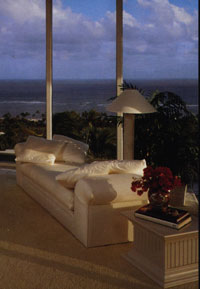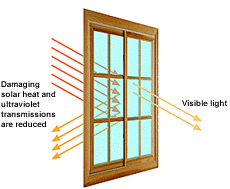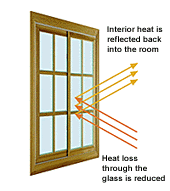 |
|
Why Film?
|
 |
The ever-increasing amount of glass being used today in homes and commercial establishments
makes window film an attractive product.
Residential customers like the comfort film gives by letting the light
in while keeping excessive heat out. They can enjoy an unobstructed view without worrying about their
fine furnishings being ruined. With window film, there is hardly ever a time of day when your room
is too hot or too bright to sit in. The improved temperature balance means greater comfort and enjoyment of
the windows designed into the home.
Commercial customers like the substantial energy savings generated by
balancing their heating and cooling requirements. Window film distinguishes between heat and light and allows
illumination without excessive heat gain. Utilization of office space is greatly improved because film increases
the ability to sit in close proximity to the windows without being blinded by the glare.
Also, with the new legislation affecting refrigerant (CFC) use, the reduction in the cooling requirements that result
from window film use may be just the edge needed to keep a building at the right comfort level without expensive changes to
their HVAC system.
|
 |
 |
|
|
|
 |
|
Window film can also reject up to 82% of the sun's heat
|
 |

|

|
|
Summer
|
Winter
|
|
Window film can reject up to 82 percent of the sun's total energy.
Air-conditioning costs are minimized making it easier for your home to keep its cool.
|
Window film can also help reflect interior radiant heat. Reducing heat loss
through the glass keeps you warmer and helps save money day and night, all winter long.
|
 |
|
What about fading?
|
 |
The major factors affecting fabric fading are:
- Ultraviolet Light (40%)
- Visible Light (25%)
- Heat and Humidity (25%)
These three reasons account for 90% of all fading.
Window film installed on glass rejects 99.9% of solar ultraviolet light!
Window film can also reject up to 82% of the sun's heat!
|
 |